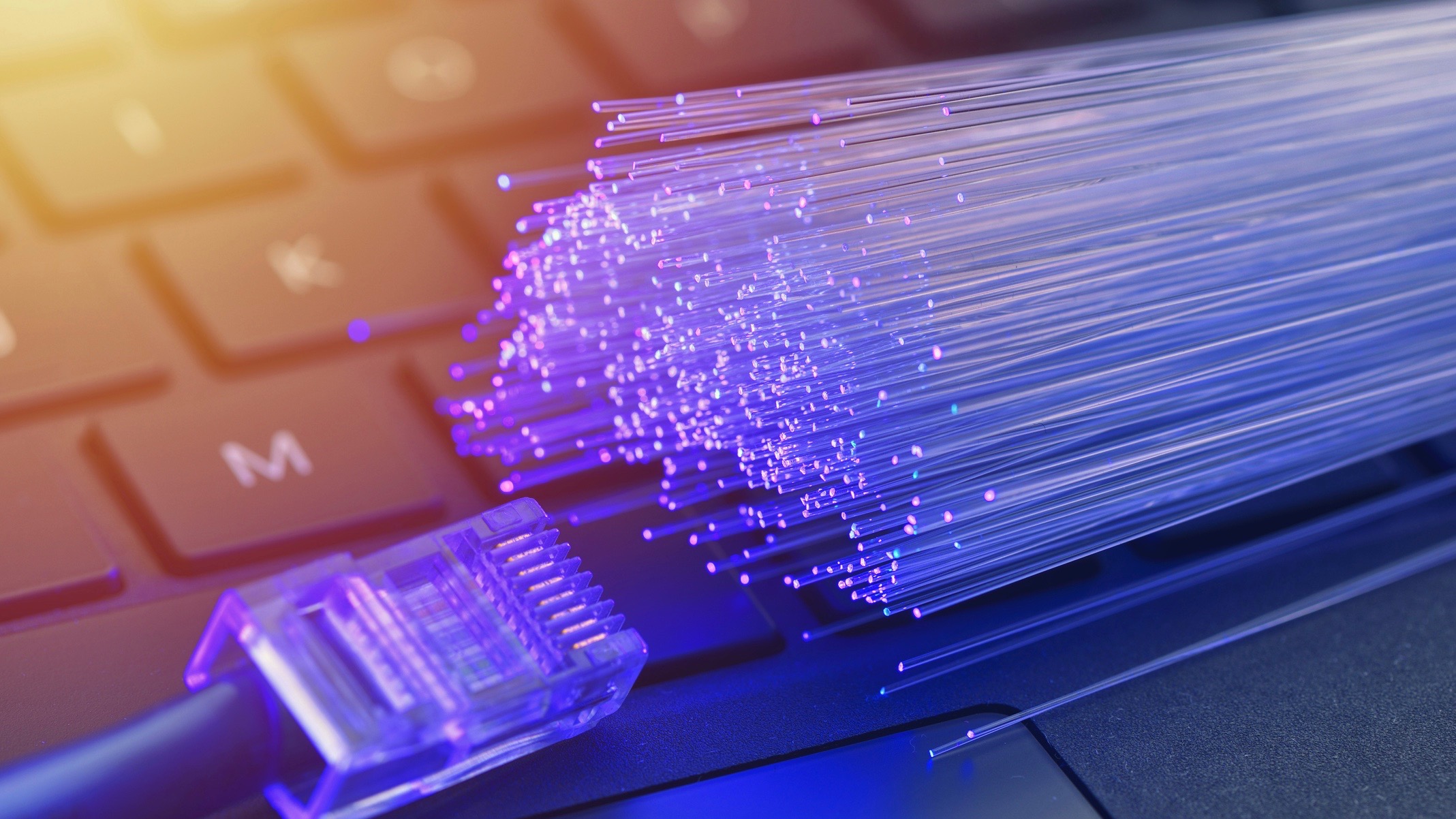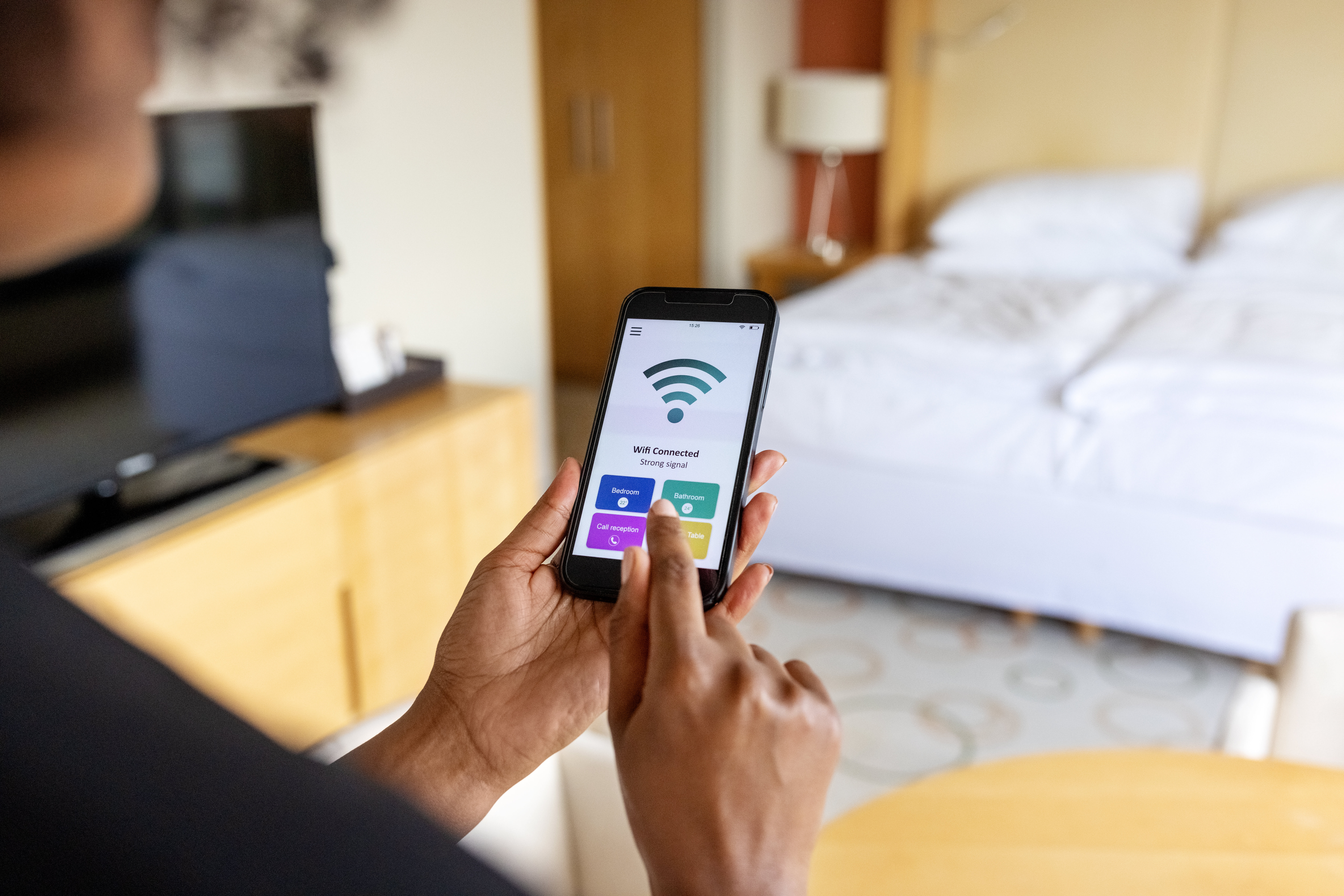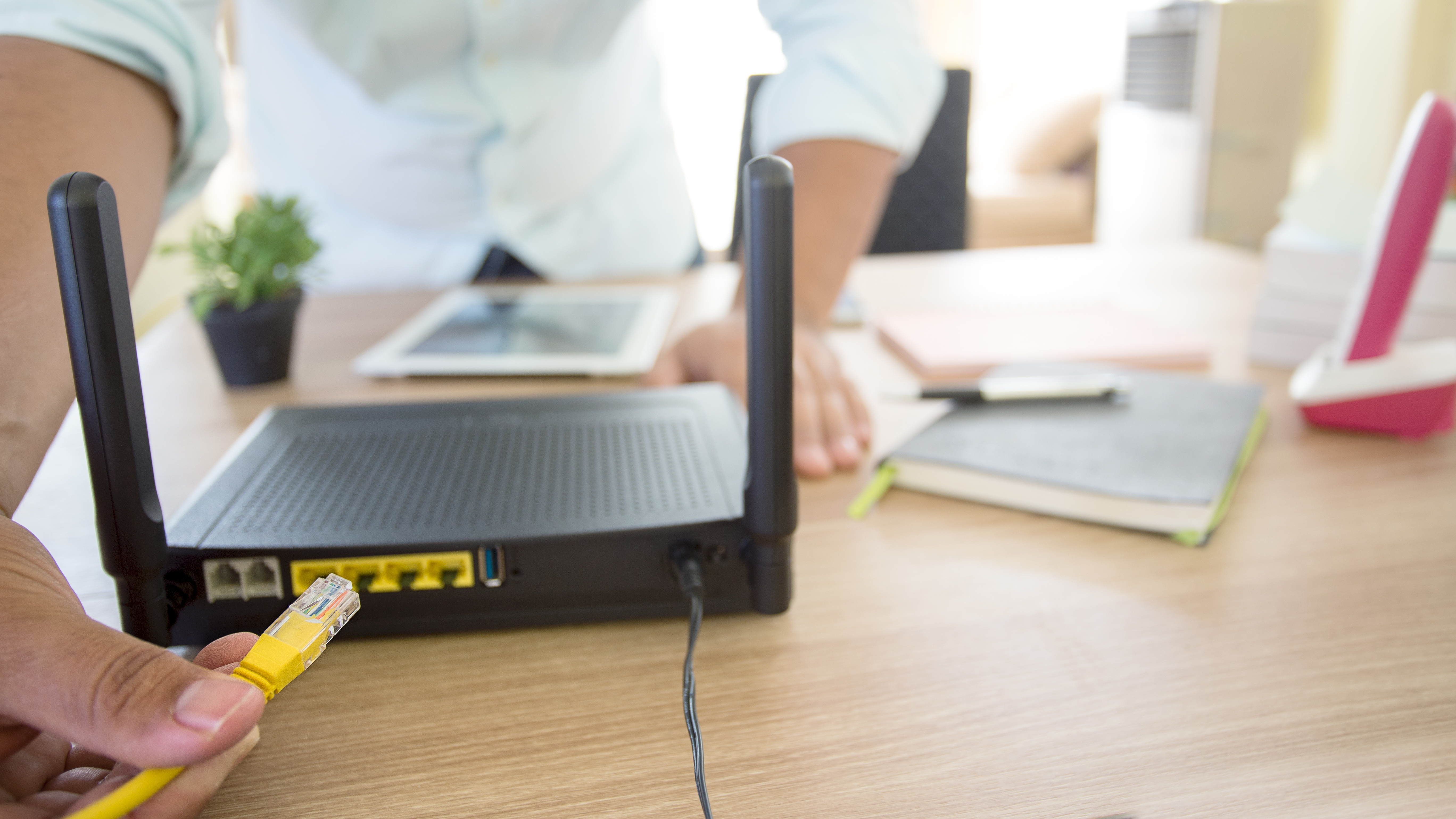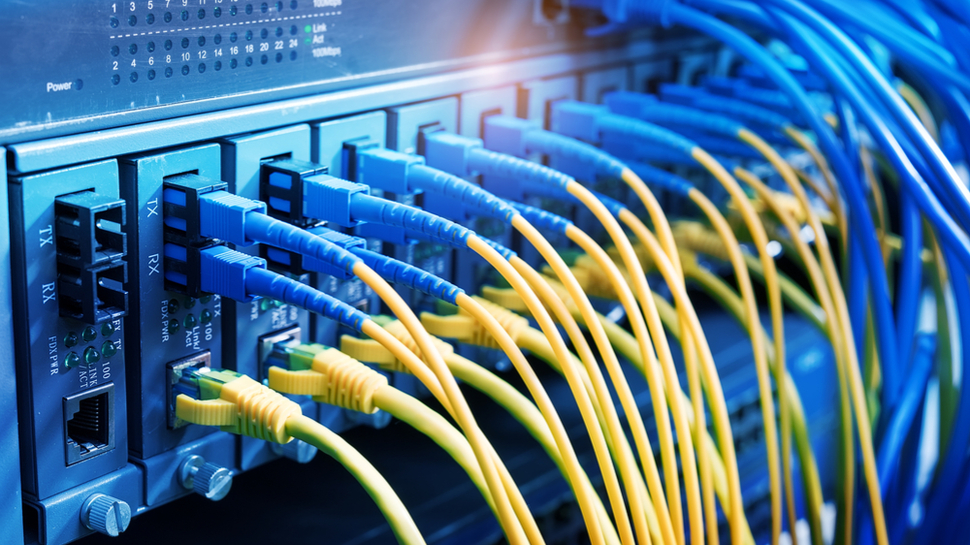What is fibre broadband?
It's common knowledge that fibre broadband is faster than standard ADSL, but have you ever wondered how it works?

ADSL broadband used to be the main option for UK consumers, but a quick glance at the latest and best broadband deals will show you that fibre packages and Full Fibre deals are now much more popular.
There are plenty of great reasons for this too. After all, fibre and full fibre deals are much faster and offer better online experiences. This is because they allow you to do more things, like download in UHD and stream your favourite TV shows and films.
However, the term 'fibre broadband' itself can be confusing. This is because it can cover lots of different bases with things like average download speeds and browsing performance, plus there are different types of fibre connection available to some, but not all, UK properties.
So, to clear all this up for you, this guide explains all there is to know about fibre broadband.
What is fibre broadband?
Fibre connections use fibre optic cables to send data, rather than the older, standard copper wires you get with ADSL broadband. The use of such cables essentially means more data can be sent faster, hence the larger average download and upload speeds you can get.
That said, under the 'fibre' umbrella there are two main types of broadband connections available:
- FTTC - or 'fibre-to-the-cabinet' - this type of broadband sees the fibre cable run from the local broadband exchange to your nearest street telephone cabinet. From there, the rest of the connection is via copper telephone wires. This type of broadband has been hugely popular over the last few years, but Openreach is now starting to phase out this particular type of connection.
- FTTP - or 'fibre-to-the-premises' - this sees the fibre optic cables run all the way from the broadband exchange directly into a property. This direct connection is what gives the fastest broadband speeds. It can also be offered by providers as 'Full Fibre'.
Both of these offer faster average download speeds than ADSL broadband, which relies solely on the old copper telephone cables.
As we mentioned above, soon the majority of us will only be able to access Full Fibre deals. This is because Openreach is upgrading the network and will no longer maintain the copper wires that are required for FTTC connections.
At present, Openreach (which is responsible for maintaining the telephone cables, ducts, cabinets and exchanges that connect nearly all homes and businesses in the United Kingdom to the national broadband and telephone network), is also conducting a Full Fibre rollout.
Openreach is aiming to provide Ultrafast Full Fibre Broadband to 25 million homes and businesses across the UK by December 2026. As soon as your address is able to access ultrafast Full Fibre speeds, you'll no longer be able to purchase 'standard fibre' or FTTC deals.
How does fibre broadband work?
The fibre optic cables transmit data and information in the form of binary codes - 0s and 1s that are referred to as 'bits'. These codes/bits are generated millions of times every second through light pulses that quickly switch on and off, and these are sent along the cables at light speed.
While it's also fair to say older copper cables work in a similar way, the major differences are that copper cables use electrical charges that can't send as much data as quickly. What's more, the further the signals need to go along the copper cable, the weaker the signal gets.
So with this, having these fibre cables running all the way from the broadband provider, to the nearby exchange and into your property (which is what Full Fibre is) can of course give you the fastest speeds.

How fast is fibre broadband?
As we've alluded to above, fibre broadband speeds can vary massively depending on what type of connection you have installed. What's more, within each fibre connection type you can opt for different broadband speeds that fit within their respective ranges - this is why we have such a wide choice of broadband deals today.
So to give you a top level overview, these are the typical speed ranges on offer:
- FTTC - has average download speeds of between 35 and 80Mbps. These are sometimes called 'superfast' speeds.
- FTTP - can theoretically offer any average download speeds, up to and in excess of 1,000Mbps (1Gbps). These are sometimes called 'ultrafast' and the above 1,000Mbps speeds may be referred to as 'gigabit internet'.
For the sake of comparison, ADSL broadband gives average download speeds of 10-12Mbps, but again this can be slightly slower or faster depending on how far the copper line has to go from the cabinet to your property and if it's in a decent condition.
In some cases you can get speeds of up to 24Mbps on the upgraded ADSL2+ lines that some providers have in place.
What are the benefits of fibre broadband?
When compared to ADSL speeds, the benefits of fibre broadband are quite clear to see:
- Faster average download speeds.
- Faster upload speeds.
- A more dependable and secure connection.
- Easier casual browsing.
- Less chance of buffering or issues with streaming.
- Smoother quality of online calls.
- Multiple devices can use it at once.
- Seamless online gaming.
- You can get your tasks done quicker.
If we dig into the specifics of the above benefits, the faster the fibre or Full Fibre connection you have, the better the download speeds you'll receive. Plus, you'll be able to use your internet on a larger number of devices without interruption.

Where is fibre broadband available in the UK?
Most of the UK's internet service providers (ISPs) use the Openreach national network to supply their broadband. As of June 2024, Openreach claims that its fibre coverage now extends to more than 98% of the country. It has also made Full Fibre available to over 13 million premises up and down the country.
The latest Full Fibre network coverage across all providers at the time of writing is 66.8.%
With Full Fibre, the company's aim is to make gigabit capable broadband available to 25 million homes (or 85% of the country) by December 2026. You can check the progress of this particular roll out here.
Anywhere that doesn't have fibre access yet will most likely be served by an ADSL connection. There are also some independent fibre companies like Hyperoptic and cable broadband providers like Virgin Media who also offer gigabit-capable connections.
If you want to know more about this then take a look at our guide to the different broadband types available in the UK.
When will Full Fibre be available in my area?
The Full Fibre rollout is happening quickly. If Full Fibre isn't yet available in your area, then the good news is that it will be soon. Remember, 25 million homes and businesses will be connected to the network by December 2026.
This rollout is happening on a town-by-town and city-by-city basis. This means that as soon as the upgrade has been made in your area, you'll be able to make the switch (there's no need to wait).
You can check out the status of the rollout here and you can use the postcode checker to see whether there's a plan to build a Full Fibre exchange at your address.
Which providers offer fibre broadband?
As mentioned above, the majority of ISPs offer fibre and Full Fibre broadband, particularly those that share use of the Openreach network. Here's a short selection of known fibre and Full Fibre broadband providers:

Fibre broadband: FAQs
Alongside questions about how fibre broadband works and the speeds it offers, we've also answered a selection of other FAQs people tend to have about this particular service:
How is Full Fibre broadband installed?
If the fibre optic cabling you need for Full Fibre is available on your street, it's likely your chosen ISP will send out an engineer to get you hooked up to it.
This is usually relatively straightforward and involves new sockets and connects being fitted in your home. However, in some cases you may need additional cabling installed. This can take a bit longer.
You can take a look at BT and Openreach's official guidance for this process here - we also have a guide to general broadband installation that can give more insights on this subject.
Is fibre broadband more eco-friendly?
It is when compared to ADSL broadband. In terms of pure sustainability and materials, fibre (but especially Full Fibre) is much more eco-friendly because it uses less copper and requires less maintenance. Fibre is also more energy efficient when it comes to data transmission.
Do you need a landline for fibre broadband?
Technically no, but you do need a phone line for a FTTC connection.
The term 'landline' actually refers to a physical phone in your property that connects to your phone line and is something people sometimes confuse for the phone line cable itself.
For clarity, with a FTTP connection, you don't need a phone line as the fibre optic cables go all the way into your home or business. We go into more detail about this in our 'do you need a landline for broadband?' guide.
Do you need any special tech for fibre broadband?
If you're moving from an ADSL connection to a fibre one, you might need to upgrade your router.
If you're upgrading to Full Fibre, you will most likely also need some new sockets and receivers fitting in your property. On top of this, you may also need a new router and modem that are capable of handling the faster speeds.
This is especially likely if you're wanting an ultrafast gigabit-capable package, but it can also vary from provider to provider.
What extra tech can you get with fibre broadband?
Fibre and Full Fibre can also open you up to more interesting and beneficial broadband tech in your home or business. Whether it’s speed and signal boosters, more sophisticated antivirus, or simply the fact you can run and operate more smart devices. You can learn more about the additional tech you can get in our guide here.
What slows down fibre broadband?
While fibre and Full Fibre are more reliable than other broadband types, there are still some things that can affect your download speeds. These include:
- Using too many devices at once.
- You're using older tech that might not work well with faster broadband.
- There's a fault on your fibre line.
- Your provider is running some tests.
- Your wireless setup is affected by other devices.
If you are in any doubt simply contact your provider for confirmation of the speeds you should be getting and they might also be able to diagnose and fix any speed issues. Or they may recommend some of the additional broadband tech we mentioned above.
Is it easy to upgrade to Full Fibre?
Yes it is! What’s more, in most circumstances you won’t have to do a great deal to get it installed in your property - if it’s available in your area.
You’ll simply need to speak to your existing provider (or a potential new one) to find out if you can upgrade from ADSL or fibre to faster Full Fibre.
If you can, you can then agree a new broadband deal and get a date for an engineer to come and install the new lines or sockets you may or may not need fitting.
If you want an example of what it can involve when using the Openreach network, check out this article from BT.
Which is more expensive, FTTC or FTTP?
Typically the faster FTTP packages are more expensive than FTTC ones, but you can argue you'll get more value out of the ultrafast speeds in terms of your overall broadband performance. The best thing to do is keep an eye out for promotional offers and deals from ISPs and you might get a bargain on a speedier tariff.

Should I get fibre broadband?
If fibre is available in your area, then you'll likely be asked to upgrade by your provider. Although people used to be able to choose between ADSL and fibre deals, this is no longer the case with most providers, who are withdrawing ADSL deals from the market.
If you do have the choice between ADSL, fibre and Full Fibre, then you need to consider which option is best for you. Similarly, if a range of Full Fibre deals are available, you'll need to consider which is right for your needs. A 100Mbps package will suit a different need to a 1Gbps package.
Your budget should be a big factor here, because as a rule of thumb, the faster the package, the higher the cost. So you should think about how much you're willing to pay each month versus a speed you think will suit your needs.
On this subject, your internet usage and needs are another key aspect. If you're in a busy household with lots of users doing things like streaming in UHD or online gaming, then a bigger Full Fibre package will probably be a good choice. Equally, if you're in a smaller property and you'll just be doing a bit of casual browsing, an entry-level package will probably suffice.
Despite all this, it is true that there can be great deals to be had on both fibre and Full Fibre broadband - you just need to know where to look. Fortunately, we can help with this. Just visit our best broadband deals guide or use our widget below. With the latter you just need to pop in your postcode and we'll give you a rundown of the best fibre and Full Fibre deals in your area.
Alternatively, you could speak directly with your current ISP and see if you can haggle for a better price on a faster fibre tariff.
Get daily insight, inspiration and deals in your inbox
Sign up for breaking news, reviews, opinion, top tech deals, and more.
Rich is a freelance copywriter and content strategist with over 10 years' experience. His career has seen him work in-house and in various agencies, producing online and offline content marketing campaigns and copywriting for clients in the energy industry.
